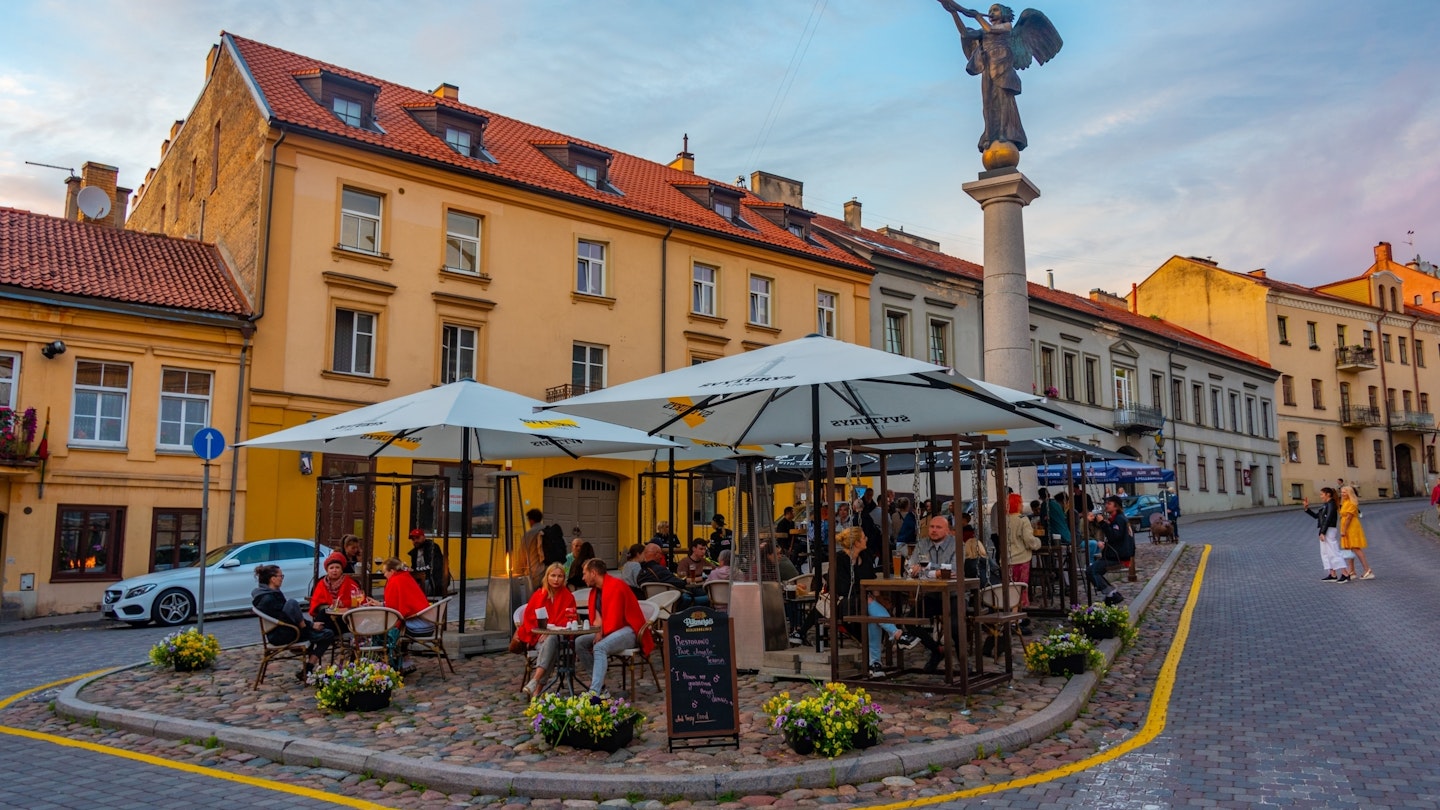Exploring Vilnius: A Guide to Lithuania’s Capital
Vilnius is a breath of fresh air. As the capital of Lithuania, it stands as a bastion of sustainability in the Baltics, innovating with initiatives aimed at protecting the environment and striving to be climate-neutral by 2030.
The Old Town of Vilnius, recognized as the European Green Capital for 2025, is also a UNESCO World Heritage site. Wandering its cobbled alleyways reveals a harmonious blend of architectural styles, from Baltic Gothic to neoclassical, particularly in Užupis—the bohemian creative quarter that self-identifies as an unofficial republic.
At over 700 years old, Vilnius has evolved into a vibrant center for traditional Lithuanian culture, contemporary theater, and music festivals, making it a thriving cultural hub. Here’s how to make the most of your first visit to Vilnius.
When Should You Go to Vilnius?
Vilnius has a lively cultural calendar, meaning any season is a great time to visit, depending on what you wish to see and do.
In spring, the city comes alive. Starting in April, pleasant temperatures invite you to explore the Old Town, enjoy a coffee or refreshing craft beer on outdoor terraces, and saunter through the picturesque Bernardine Garden. The cultural events include Kino Pavasaris (Cinema Spring), showcasing over 100 films, and Street Music Day, where original live music fills the streets.
Summer is bustling with parties, food fairs, and significant music festivals such as the Lithuanian Song Celebration and the Christopher Summer Festival. The electronic and techno scene also thrives in August at festivals like LOFTAS.
In autumn and winter, while temperatures drop, a myriad of cultural and gastronomic events, such as the Vilnius International Theatre Festival and Vilnius Christmas Market, keep the city vibrant and engaging.
How Much Time Should You Spend in Vilnius?
Given its role as Lithuania’s cultural epicenter, planning at least a long weekend is advisable. Beyond its stunning architecture and lush green spaces, the city is rich with urban art, compelling museums, and delightful restaurants waiting to be explored.
If time allows, Vilnius serves as an excellent base for excursions to significant cultural sites. Consider trips to Kernavė, a UNESCO listed archaeological reserve, or Trakai Castle, an enchanting fortress on an island in Lake Galvė.
Getting In and Around Vilnius
Vilnius is well connected by train and bus services from major cities like Krakow, Warsaw, and Rīga. The Vilnius International Airport is conveniently located just 30 minutes from the city center with regular public transport options.
Exploring Vilnius on foot is delightful, allowing you to enjoy the city’s lush green areas. For those preferring other means, the local bus system and bike rentals are good alternatives. The CycloCity bike-sharing system is popular, and private companies, like some local bike rental services, offer tours and helmets for safety.
Top Things to Do in Vilnius
Your first visit to Vilnius should include essential sites that showcase the city’s charm. Start your itinerary at the iconic Gates of Dawn, meandering through the Glass Quarter (the former Jewish quarter) and along Pilies Street, where Gediminas Castle awaits a visit.
Explore Gediminas Castle
The surviving tower of the Upper Vilnius Castle, Gediminas Castle, is steeped in history. According to local legend, the selection of this hill for the castle stemmed from Gediminas’ dream of an iron wolf howling at the summit. The castle features an interactive museum celebrating Vilnius’ rich historical narrative.
Visit St. Anne’s Church and Nearby Gardens
St. Anne’s Church, an architectural jewel, has remained virtually unchanged since the late 15th century. Behind it lies the serene Bernardine Garden, an ideal spot for relaxation amidst the city’s vibrant atmosphere. Enjoy local music during summer festivals or simply unwind with a good book.
Indulge in Traditional Lithuanian Cuisine
Plate after plate of delectable Lithuanian dishes await your taste buds. Traditional meals such as cepelinai (potato dumplings), miško gribų tiršta sriuba (wild mushroom soup), and other local delicacies exemplify the country’s rich culinary heritage. Dining at family-run establishments will enhance your gastronomical experience.
What Currency to Expect and Cost of Living
The euro is the official currency in Lithuania, and Vilnius is known for its affordability—especially regarding local food, craft beer, and public transport. Here’s a quick reference for daily expenses:
- Hostel Room (mixed dorm): €15 to €30
- Basic Room for Two: €30 to €60
- Public Transport Ticket: under €1
- Coffee: €2 to €4
- Beer/Pint at the Bar: €3 to €5
- Dinner for Two: €30 to €50
Day Trips from Vilnius
Vilnius serves as an excellent home base for exploring other parts of Lithuania. With consistent train and bus services, you can easily reach standout destinations like Kernavė and Trakai within a couple of hours.
The Language and Tipping Customs
Lithuanian is the official language, but English is widely spoken, particularly among the younger population. Learning a few key phrases in Lithuanian is a nice way to engage with locals. When dining out, consider tipping between 5 to 15% based on service quality.
Conclusion
Vilnius is a city brimming with life, history, and culture. Its charming streets, warm locals, and diverse experiences make it a remarkable destination for travelers seeking both relaxation and adventure.





